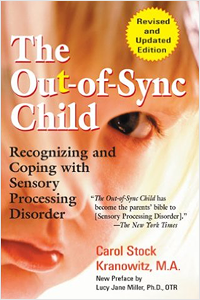There's not a lot of people in my country, the Philippines, who know well enough about Sensory Processing Disorder. At least, that's what it feels like to me.
My name's Lyn. I most probably have SPD, and was never diagnosed.
I spent most of my life wondering why I behaved the way I did, especially as a child. Little things, like my constant need of motion. My almost irresistible craving for crunchy foods. My total aversion to carbonated drinks. My dislike of how certain food textures felt against my teeth.
Then I got married and had a baby. And we worried because he had turned 18 months, and he didn't speak, would be in constant motion, and often bumped into things. My mother would tell me that I was exactly like that when I was his age, in an effort to reassure me and assuage my worries.
We took him to the developmental pediatrician. At age 2, my son R was diagnosed with a mild form of SPD.
And I had absolutely no clue what that was.
So we determined to find out all we could about it. My husband and I took him to see an occupational therapist and a speech therapist. We heard unfamiliar words used to describe our son - vestibular seeker, proprioceptive seeker, tactile mixed. I pored over websites on the internet that talked about SPD. I tried to read The Out-of-Sync Child by Carol Kranowitz and couldn't understand what was being said due to the technical terms. It's a good book, don't get me wrong, but I needed something that could explain it to me in more everyday terms.
Then I found Raising a Sensory Smart Child by Lindsey Biel and Nancy Peske, and it was an eye-opener.
 |
| You can buy this book from Amazon or iTunes. |
So what is SPD?
Sensory Processing Disorder was first coined by neuroscientist A. Jean Ayres, PhD. It was previously known as sensory integration dysfunction. The SPD Foundation defines it as "a condition that exists when sensory signals don't get organized into appropriate responses". Dr. Ayres likened it to a neurological traffic jam that "prevents certain parts of the brain from receiving the information needed to interpret sensory information correctly".
From this, I learned that there are more than just the usual five senses that was being taught in classrooms. Aside from the usual sight, touch, smell, hearing and taste, my husband and I discovered two more of the many senses we have. The ones that became the most prominent to us were the vestibular and proprioceptive senses.
To keep things simple, the vestibular system tackles our sense of movement and balance, while the proprioceptive system tells us our body parts' place in space.
Then you can either be a seeker, avoider, or mixed. As stated above, R was identified as a vestibular and proprioceptive seeker, and tactile mixed. We started occupational therapy and has seen a lot of improvement since. And I learned so much about myself in the process.
But I found how lacking information was about this. A lot of people in my country know about ADHD, or Autism, but mention SPD and they pretty much go, "What's that?"
So that's what this blog is for. It is my prayer that my experience with myself and my son, documented in this blog, will help other parents of SPD kids, and even SPD adults, know more about this condition, and learn more about themselves and why they tick the way they do.
Hi, I'm Lyn. And this is my son R. Nice to meet you.


No comments:
Post a Comment